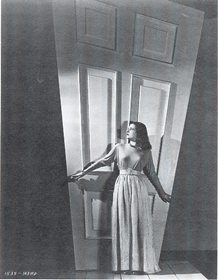Critical Architecture: more than mere containment
Overview
This module is designed to open wide to students the question of architectural discourse to allow them to see how rich and enriching it can be. Architecture is far more than mere buildings. This module explores in detail some of the diverse ways in which it has been conceived, studied and interrogated from c.1450 to the present. In what ways does architecture participate in social conformism, in capitalism, and in what ways is architecture able to offer resistance to hegemonic trends? This is not a survey of architecture; even less is it a study of architectural styles. Instead the course is conceived to challenge the overwhelmingly historicist treatment of architecture in much current architectural history. Thus it is designed in terms of particularly fruitful ways of approaching architecture in terms of problematics. Themes include gender & sexuality, matter and materiality, decoration and adornment, fabrics and cladding, architecture & poetry; architecture and film; architecture and temporality beyond historicism; architecture & colonialism.
Aims
On successful completion of the module, students will be able to:
- Identify, articulate and critique a range of approaches to architectural discourse and be able to discuss them critically.
- Discuss a range of different sorts of architecture in relation to key theoretical issues, including gender, sexuality, colonialism, temporality.
- Discuss with knowledge and insight important debates in this field.
- Think critically about the problem of the relationship between past and present in architecture and theory.
- Engage in architectural analysis at both a detailed empirical and critical theoretical level.
Academic and graduate skills
- Students will be trained in the ability to read carefully and think critically and independently about complex issues relating to architectural theory and architectural history.
- Students' visual analysis capacities will be enhanced and refined.
- Students will be trained in the capacity to think about one set of issues in relation to another when there are significant shifts of paradigms between them.
- Students will be able to draw ideas from one source and apply them critically and with rigour to another.
- Students will learn the problems of thinking about "history" in relation to "architecture'.
- A critical knowledge of leading debates in this field.
- A renewed and critical awareness of the questions and potential entailed in thinking architecture in relation to gender, film, literature, fashion, colonialism.
Suggested Reading
- Catherine Ingraham, Architecture, Animal, Human. The Assymetrical Condition, London & New York: Routledge, 2006.
- William Braham & Jonathan Hale (eds), Rethinking Technology. A Reader in Architectural Theory, London & New York: Roiutledge, 2007.
- Radner, H 2011, The Apartment Plot: Urban Living in American Film and Popular Culture, 1945 to 1975 (& review: Journal Of American History, 98, 3, pp. 880-881).
- Booth, M 2010, Harem Histories [Electronic Resource] : Envisioning Places And Living Spaces / Marilyn Booth, Editor, n.p.: Durham [N.C.] : Duke University Press, 2010.
- Davidson, J 2011, Bodymaps: Sexing Space and Zoning Gender in Ancient Athens, Gender & History, 23, 3, pp. 597-614,
- Lori A Brown, Feminist Practices. Interdisciplinary approaches to women in architecture, Ashgate: 2011
- B Colomina (ed), Sexuality and Space, Princeton University School of Architecture: Princeton, 1992.
- Holmes, D, O'Byrne, P, & Murray, S 2010, Faceless sex: glory holes and sexual assemblages, Nursing Philosophy, 11, 4, pp. 250-259
- Shannahan, D 2014, Gender, inclusivity and UK mosque experiences, Contemporary Islam, 8, 1, pp. 1-16.
- Olkowski, DE 2001, Matter in Motion, Architecture and Sexuality, Parallax, 7, 2, pp. 95-106
- Baydar, G 2012, BEDROOMS IN EXCESS, Woman's Art Journal, 33, 2, pp. 28-34.
- Baker, CM 2005, Rebuilding the House of Israel: Architectures of Gender in Jewish Antiquity, Nashim, 9, pp. 191-203
- Baydar, G 2002, Tenuous boundaries: women, domesticity and nationhood in 1930s Turkey, Journal Of Architecture, 7, 3, pp. 229-244,
- A Friedman, Women & the Making of the Modern House, New York: Abrams, 1998.
- Pollock, G 2008, The visual poetics of shame: A feminist reading of Freud's Three essays on the theory of sexuality (1905), Shame and sexuality: Psychoanalysis and visual culture pp. 109-128 New York, NY, US: Routledge/Taylor & Francis
- Conan, M 2002, Bourgeois And Aristocratic Cultural Encounters In Garden Art, 1550-1850 / Edited By Michel Conan,: Washington, D.C. : Dumbarton Oaks Research Library and Collection, c2002
- Gershenson, O 2005, The Restroom Revolution Will Not Be Televised: The Transgender Movement and the Politics of Unisex Bathrooms, Conference Papers -- International Communication Association, pp. 1-26.
- P Bourdieu, Outline of a Theory of Practice, Cambridge UP: Cambridge, 1977, esp. chs. 2, 3, and 4.
- H Lefebvre, The Production of Space (La production de l’espace, Paris: Editions Anthropos, 1974), trans. D Nicholson-Smith, Blackwell: Cambridge, 1991.
- P Bourdieu, ‘The Berber House’ in M Douglas, Rules and Meanings, Penguin: Harmondsworth, 1973.
- Jarzombek, M 2010, Architecture and sexuality in the words of Filarete, Thresholds, 37, pp. 6-7.
- Prussin, L, Adan, A, Andrews, P, Fullerton, A, Grum, A, & Holter, U 1995, African Nomadic Architecture: Space, Place, And Gender, Washington, DC: Smithsonian Institution Press
- Baydar, G 2002, Tenuous boundaries: women, domesticity and nationhood in 1930s Turkey, Journal Of Architecture, 7, 3, pp. 229-244,
- Cheng, A 2009, Skin deep: Josephine Baker and the colonial fetish, Camera Obscura, 69, pp. 34-79,
- Betsky, A 1995, Building Sex : Men, Women, Architecture, And The Construction Of Sexuality / Aaron Betsky, n.p.: New York :
- Colomina, B, & Bloomer, J 1990, Sexuality and space: interview with Beatriz Colomina, Columbia University. Graduate School Of Architecture, Planning & Preservation Newsline, 2, 7, pp. 6-7,
- Shonfield, K 2000, Walls have feelings: cult films about sex in 1960s London, Architectural Design, 70, 1, pp. 32-35.

Module information
- Module title
Critical Architecture: more than mere containment- Module number
HOA00076M- Convenor
Helen Hills
For postgraduates
